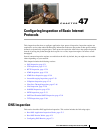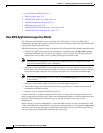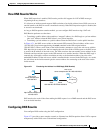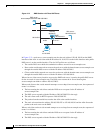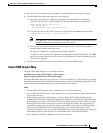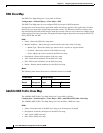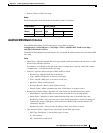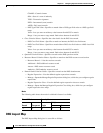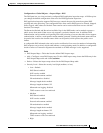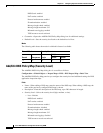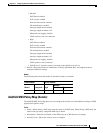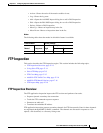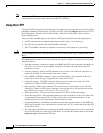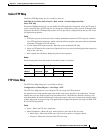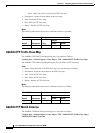
47-9
Cisco ASA 5500 Series Configuration Guide using ASDM
Chapter 47 Configuring Inspection of Basic Internet Protocols
DNS Inspection
Configuration > Global Objects > Inspect Maps > DNS
The DNS pane lets you view previously configured DNS application inspection maps. A DNS map lets
you change the default configuration values used for DNS application inspection.
DNS application inspection supports DNS message controls that provide protection against DNS
spoofing and cache poisoning. User configurable rules allow certain DNS types to be allowed, dropped,
and/or logged, while others are blocked. Zone transfer can be restricted between servers with this
function, for example.
The Recursion Desired and Recursion Available flags in the DNS header can be masked to protect a
public server from attack if that server only supports a particular internal zone. In addition, DNS
randomization can be enabled avoid spoofing and cache poisoning of servers that either do not support
randomization, or utilize a weak pseudo random number generator. Limiting the domain names that can
be queried also restricts the domain names which can be queried, which protects the public server
further.
A configurable DNS mismatch alert can be used as notification if an excessive number of mismatching
DNS responses are received, which could indicate a cache poisoning attack. In addition, a configurable
check to enforce a Transaction Signature be attached to all DNS messages is also supported.
Fields
• DNS Inspect Maps—Table that lists the defined DNS inspect maps.
• Add—Configures a new DNS inspect map. To edit a DNS inspect map, choose the DNS entry in the
DNS Inspect Maps table and click Customize.
• Delete—Deletes the inspect map selected in the DNS Inspect Maps table.
• Security Level—Select the security level (high, medium, or low).
–
Low—Default.
DNS Guard: enabled
NAT rewrite: enabled
Protocol enforcement: enabled
ID randomization: disabled
Message length check: enabled
Message length maximum: 512
Mismatch rate logging: disabled
TSIG resource record: not enforced
–
Medium
DNS Guard: enabled
NAT rewrite: enabled
Protocol enforcement: enabled
ID randomization: enabled
Message length check: enabled
Message length maximum: 512
Mismatch rate logging: enabled
TSIG resource record: not enforced
–
High



